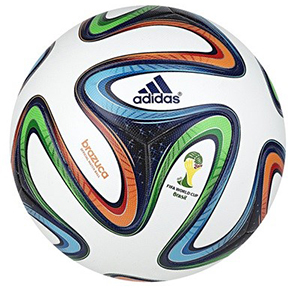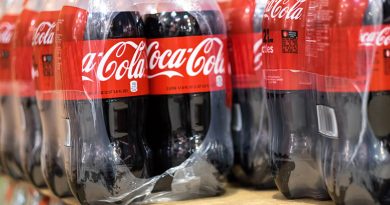The World Cup of Brands part 3: Adidas v Nike and Coke v Pepsi
Posted by : Dr John Jewell
 Whilst the possibilities of the biggest hitters in world football meeting each other in the World Cup final are subject to the vagaries of chance and the (un)certainties of superior skill, we can be sure that the titans of world marketing are to fight it out in much the same way as they have done in previous tournaments. Yes, the stage is set for the real heavyweight clashes: Adidas v Nike and Coca Cola v Pepsi.
Whilst the possibilities of the biggest hitters in world football meeting each other in the World Cup final are subject to the vagaries of chance and the (un)certainties of superior skill, we can be sure that the titans of world marketing are to fight it out in much the same way as they have done in previous tournaments. Yes, the stage is set for the real heavyweight clashes: Adidas v Nike and Coca Cola v Pepsi.
On the face of it, Coke and Adidas should have the best deal. They are two of the six top level official ‘partners’ of FIFA and have an ongoing relationship with the game’s governing body which exists outside of the flagship tournament. According to IEG Sponsorship Consultancy, Coke and Adidas pay an annual fee to FIFA of between $24 and $44 million dollars for global rights to a full range of football activities in World Cup year or not. Both companies have a long relationship with the World Cup, too. Coke has had a ‘formal association’ with the event since 1974 and has been an official sponsor since 1978. Adidas connection goes back to the 1950’s and since 1970 it has supplied the official match ball for all World Cup matches.
For such money the big brands expect FIFA to prevent ‘ambush marketing’, where brands attempt to advertise or promote around an event they are not officially sponsoring. And, as I wrote in the first part of this series, only authorised event stakeholders of the FIFA World Cup are legally allowed to use images of the official emblem, the official Mascot and trophy and use phrases such as ‘Brazil 2014’, ‘Copa 2014’ etc. According to FIFA’s website, ‘specific legislation has been implemented to prevent illegal marketing categories which refer to the FIFA World Cup. This legislation specifically prohibits ambush marketing by association, giving FIFA the opportunity to take action against those who seek to take commercial advantage of the goodwill vested in our events through ambush marketing.’
FIFA has not been slow to pursue cases. In the first six months of 2013 it took action against around a 100 companies that didn’t have permission to use protected words or logos related to the World Cup. Auke-Jan Bossenbroek, FIFA’s legal representative responsible for its trademarks, told a conference in Rio that, ‘there have been instances of large corporations trying to use the popularity of the World Cup in marketing material and promotional activity.’ And in March of this year unnamed FIFA spokesperson told Marketing Magazine: ‘we ask companies to respect the exclusivity to brand association with the FIFA World Cup that FIFA has granted to its commercial affiliates, by avoiding activities that might create a commercial association…..We therefore ask companies to refrain from attempts to free-ride on the huge public interest generated by the event.’
To which you have say: fat chance! How can FIFA expect Nike, which supplies kit to 10 of the tournament’s 32 teams (as opposed to Adidas with 9) not to capitalise on the phenomenal global appeal of the World Cup? Relatively new arrivals to the arena of football marketing (they began in earnest to concentrate on soccer in 1994) the largest sportswear company in the world, with $25 billion in revenue and a 17 percent market share made $1.9 billion in football revenue in 2013. For Trevor Edwards, Nike’s brand president, football is where the company is staying. He told Bloomberg TV: ‘to be a truly global football brand we have to compete in football. We are committed to being a football company 365 days a year.’
To many, the fact that Nike is not linked in any way to FIFA gives them a freedom to operate that Adidas doesn’t enjoy. For Trevor Cairns, former Nike and Umbro Chief Marketing Officer, Adidas sponsorship investment, ‘limits the amount a brand can subsequently invest in consumer engagement beyond activating their sponsorship rights.’ That said, Adidas has already seen eight percent sales growth in 2014 and Herbert Hainer, Chief Executive of Adidas, has stated ‘this year we will add 1-1.2 billion Euros ($1.4-1.6 billion) to operational revenue, with the World Cup playing an important role.”
Both companies are also strongly represented on social media – the key battleground. According to Repucom, the sport sponsorship & sport marketing consultancy. Nike leads the way on Facebook and Twitter with 35 million Facebook page ‘likes’ and 1.8 million Twitter ‘Followers’. Rupucom states that as of the beginning of May, ‘Nike has over twice the amount of engaged fans across the two popular social media sites than rivals Adidas. Globally, Facebook is the social media site where both brands are finding most traction. In two months, Nike has increased their Facebook fan base by 13.7 million more users’.
Whatever the chances of Nike overtaking Adidas in the world market we can see already that both companies have invested a great deal to capture audiences. Nike’s ‘Risk Everything’ winner stays on ad has, at the time of writing, attracted 66,334,577 million YouTube hits. Featuring the cream of the world’s talent signed to Nike including the likes of Cristiano Ronaldo, Neymar Jr., Wayne Rooney, Zlatan Ibrahimović, Gerard Piqué, Gonzalo Higuaín, the different nationalities of these players is very important. The skill of the ad is in how it provides the audience with all the reference points and thrills of a global football event without actually ever mentioning the World Cup.
The Adidas campaign, while also relying on talent such as Philipp Lahm, Dani Alves, Luis Suárez, Mesut Özil and Steven Gerrard is more layered – the focus has been on the journey of the tournament match ball around the world, the quality of its footwear and of course the special appeal of the world best player, Leo Messi. The Leo Messi ‘On the road to the 2104 World Cup’ ad has alone attracted to date 2,093, 625 YouTube views.
Messi is also the main star signed to Pepsi, who have rivalry with Coca Cola which stretches back over a century and has manifested itself in a variety of ways. In 2006 Donald W. Short, then president of the Africa and Middle East Group for The Coca-Cola Co. was moved to say about Coke’s expansion into Asia “I love India, but there are 3 P’s that I don’t like in India: poverty, pollution and Pepsi.
For this World Cup Coca Cola has launched what it describes as its largest ever campaign. The overarching title of the advertising is ‘The World’s Cup ‘and the aim is to show the sport and the soft drink seamlessly working together as a force for social good. With no hint of his tongue being anywhere near his cheek Joseph Tripodi, Coca-Cola’s executive vice-president and chief marketing and commercial officer, said in April: ‘Just as Brazil is everyone’s country and Coca-Cola is everyone’s drink, the Fifa World Cup is everyone’s cup. Through The World’s Cup, Coca-Cola wants to celebrate real people playing football, demonstrating how the game is a force for a more inclusive and connected world.’
Whilst Coca Cola has largely eschewed celebrity endorsement, Pepsi has embraced it. Alongside Messi in its’ its 2014 #FutbolNow campaign are Robin van Persie, David Luiz, Sergio Ramos and Jack Wilshere. The ‘Now is what you make it ‘ ad, filmed in Rio and featuring the super cool Janelle Monet covering David Bowie’s “Heroes” showcases all the afore mentioned players. It has had 1,360, 498 hits on YouTube.
For Pepsi as well as Coca Cola, the World Cup is the real thing. Kristin Patrick, Pepsi’s Global Chief Marketing Officer told Bloomberg in April, ‘It’s the first time we’ve rolled out a global football campaign to this magnitude. It’s in 130 countries, and also we have a large body of content from television, short films, digital content. We have events happening every single month leading to up to the summer.’
The point is that the major companies, whether they are official sponsors or not, want to be associated with a global event that is guaranteed to capture the attention of consumers in the majority of the world’s markets. The advertising campaigns emphasise the necessity of the particular brands to the success of football – to the success of life, even. Quoted in RWConnect Marketing magazine Scott McCune, Coca-Cola vice president global partnerships and experiential marketing, summed it all up: for him, sponsorship is about recruiting the next generation of Coke consumers by getting them to fall in love with the brand. He said, ‘When you get to the World Cup, the target broadens out significantly. It’s not just the avid football fan, now the whole family gets engaged around the FIFA World Cup, so we look at that as an opportunity to continue our strategy – but to a much broader audience. And it’s relevant to every country around the world.’


